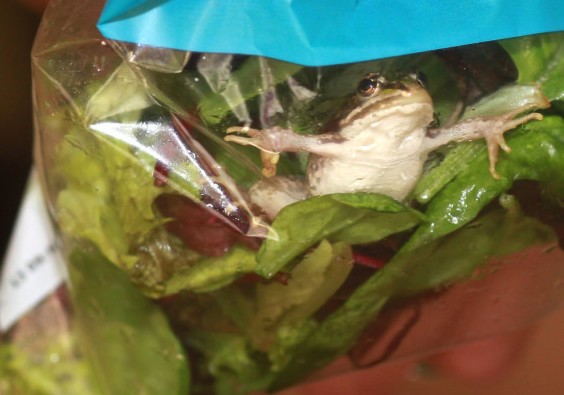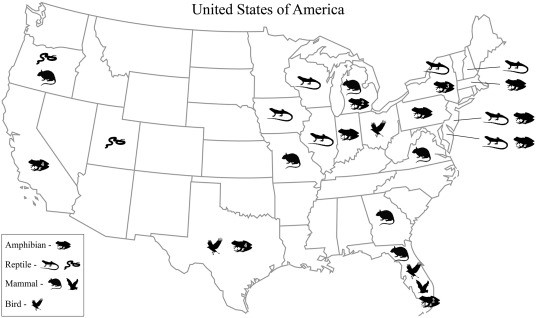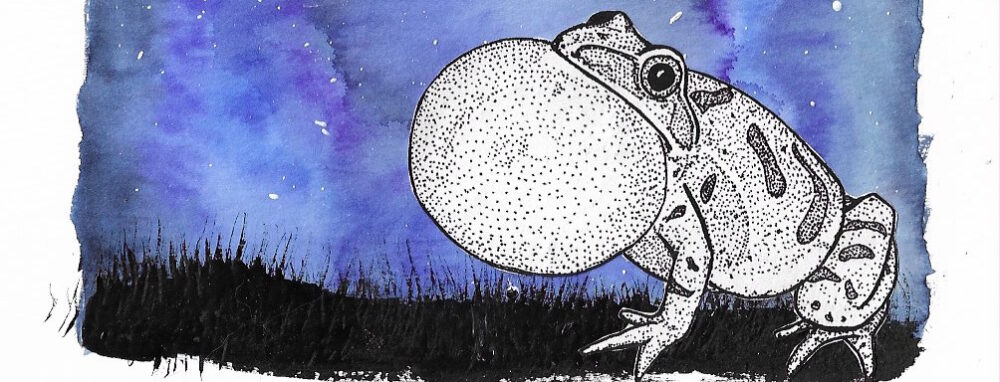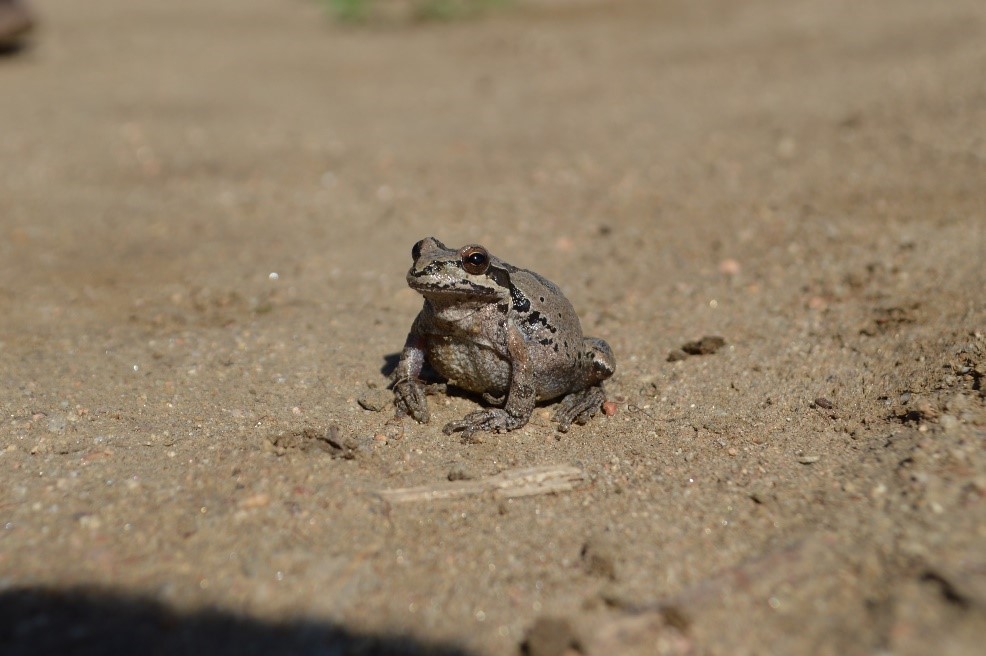By Hannah Ladner
Everyone has heard their fair share of ghost stories but here is a story that you may not have heard. In the Salinas Valley in California, there are seemingly endless agriculture fields that are plagued by an unstoppable horde. On dark misty nights, these creatures will emerge from the irrigation canals and ditches lining the fields and move into the vast fields of lettuce and spinach. When the sun comes up, these creatures take refuge in the greens and the growers return to their crops. Then, they are unknowingly harvested, packaged, and sent to terrorize unwitting, innocent consumers!
While this tale is an exaggeration, its basis lies in fact. Every year, there are a number of cases where people purchase pre-packaged vegetables from stores only to discover that an animal, often a frog, toad, or lizard, is also enclosed. This isn’t a common occurrence, there are only a couple of incidents a year, but when mainstream news hears about it, it often goes viral. Between 2004 and 2018, there have been at least 40 incidents where an animal has been found, with most of these (75%) being amphibians or reptiles. In 9 of these cases, the stowaways were alive and intact, allowing for the people who found them to release them or keep them as pets. This is a serious issue because of the risks of spreading disease to naïve wildlife populations or even cross breed with native species.

Despite lacking hard data on the true scale of the issue, the Salinas Valley lettuce growers knew something had to be done and they assembled a team. Dr. Danny Hughes was one of these researchers brought in to determine how to reduce the frequency of these incidents. In the past, Dr. Hughes has been involved in research on evolution and ecology studying species including leopard frogs, African burrowing snakes, and the Central African forest chameleon. The main concerns that he had were how to keep tree frogs out of the salad fields, how to apply knowledge of frog ecology to develop better harvesting practices, how this issue may be contributing to the spread of disease, and how to better keep track of future incidents.
Frogs: Keep Out!
So how would Dr. Hughes keep the treefrogs, the main offenders, out of the salad fields; mini frog fences? After a brief study, they found that this was in fact true! Of the many fences they developed, two of the novel fence ideas were effective at keeping out frogs most of the time. One of these was a fence made of sandpaper with a grit matching the size of tree frog toe-pads preventing them from gripping the surface while the other design was a solid fence with a lip on top. This second design prevented frogs from passing the fence 100% of the time. If you’ve ever encountered a treefrog yourself, you may know first-hand what good jumpers and climbers they are so you can imagine what an impressive feat this is!
Using Frog Cycles.
Dr Hughes’ idea is to show growers a cost-effective solution combined with knowledge of frog phenology, or the seasonal cycles of frog movements and habits. Frogs often migrate during wet, rainy nights and during mating season. Foresight of these events will provide growers with the knowledge to prevent accidentally harvesting frogs hiding in their lettuce. This would include what weather events are likely to trigger the animals to leave the irrigation canals as well as what times of the year certain frog species breed and migrate. This knowledge combined with a cost-effective fence may be the best way of preventing the accidental harvest of wildlife.

Flattening the Frog Curve.
Another concern that the public had was the risk of bacterial diseases being spread by these frogs. Dr. Hughes said that the chances of a frog being a reservoir or host for diseases such as E. coli is extremely low. He was more concerned about frogs transmitting diseases to other amphibians throughout the country because in many cases where animals were found alive, they were often released. These non-native species have the potential to be extremely damaging to native species. The Pacific Tree Frog was one of these commonly found species and is known to carry the Chytrid fungus without showing any symptoms. Chytrid is a fungal pathogen that is currently threatening many of the world’s frog species. By releasing these animals, this disease may be able spread to areas previously unaffected by the fungus.
Future Incidents.
In the future, Dr. Hughes said that he hopes to develop an online portal for consumers to report any future wildlife findings. This would allow for a greater amount of transparency to the public and enable researchers to find larger patterns of these incidents. With the limited data that is available now, the true extent of this issue isn’t able to be determined. The data that this study was able to analyze were only the incidents from popular Google-search results that “blew up” and there’s no way of knowing how many people discovered animals and simply didn’t make a fuss about it. If this portal were to be developed, differences between conventional and organic crops could be studied as well as to see if there are any patterns in when these incidents occur.
The truth of the matter is that there isn’t “actually” a horde that wants to get into your salad bag, just a little tree frog in the wrong place at the wrong time. We simply need more research to be conducted, published, and brought to the attention of salad eaters worldwide to address the problems outlined in this article.


